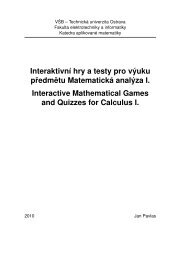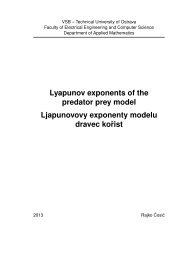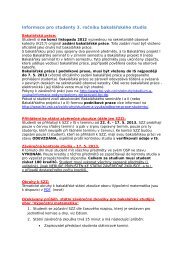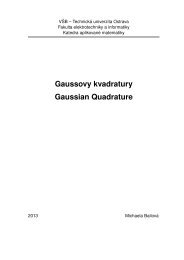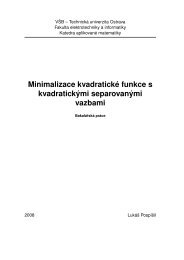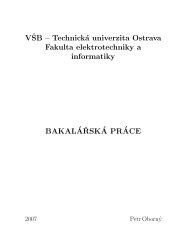The Boundary Element Method for the Helmholtz Equation ... - FEI VÅ B
The Boundary Element Method for the Helmholtz Equation ... - FEI VÅ B
The Boundary Element Method for the Helmholtz Equation ... - FEI VÅ B
Create successful ePaper yourself
Turn your PDF publications into a flip-book with our unique Google optimized e-Paper software.
694.4.5 Hypersingular Integral Operator<strong>The</strong> matrix corresponding to <strong>the</strong> hypersingular integral operator is given byD κ,h [i, j] := 1 4π− κ24π∂Ω∂Ω∂Ω∂Ωe iκ∥x−y∥∥x − y∥ ⟨curl ∂Ω ϕ j (y), curl ∂Ω ϕ i (x)⟩ ds y ds xe iκ∥x−y∥∥x − y∥ ϕ j(y)ϕ i (x)⟨n(x), n(y)⟩ ds y ds x .Since <strong>the</strong> unit outward normals are constant on individual elements, we have <strong>for</strong> <strong>the</strong> firstintegral D 1 1 e iκ∥x−y∥κ,h [i, j] :=4π ∂Ω ∂Ω ∥x − y∥ ⟨curl ∂Ω ϕ j (y), curl ∂Ω ϕ i (x)⟩ ds y ds x= ⟨curl ∂Ω ϕ j | τl (y), curl ∂Ω ϕ i | τk (x)⟩ 14πτ k ⊂supp ϕ i τ l ⊂supp ϕ i= ⟨curl ∂Ω ϕ j | τl (y), curl ∂Ω ϕ i | τk (x)⟩V κ,h [k, l]τ k ⊂supp ϕ i τ l ⊂supp ϕ iτ kτ le iκ∥x−y∥∥x − y∥ ds y ds xand thus <strong>the</strong> matrix entries are some linear combination of corresponding entries in V κ,h .Recall thatcurl ∂Ω ϕ(y) := n(y) × ∇ ϕ(y),where <strong>for</strong> <strong>the</strong> extensions of <strong>the</strong> basis functions we can choose functions constant along <strong>the</strong>normal defined by <strong>the</strong> reference functionsˆϕ1 (ξ) := 1 − ξ 1 − ξ 2 , ˆϕ2 (ξ) := ξ 1 , ˆϕ3 (ξ) := ξ 2 <strong>for</strong> ξ = [ξ 1 , ξ 2 , ξ 3 ] T ∈ ˆτ × R.Hence, it is sufficient to compute <strong>the</strong> integralD 2 κ2κ,h [i, j] :=4π= κ24π+ κ24π∂Ω∂Ω∂Ωϕ i (x)ϕ i (x)ϕ i (x)∂Ω∂Ω∂Ωe iκ∥x−y∥∥x − y∥ ϕ j(y)⟨n(x), n(y)⟩ ds y ds x1∥x − y∥ ϕ j(y)⟨n(x), n(y)⟩ ds y ds xe iκ∥x−y∥ − 1∥x − y∥ ϕ j(y)⟨n(x), n(y)⟩ ds y ds x .<strong>The</strong> latter integrand is bounded and we can use <strong>the</strong> 7-point quadrature scheme. <strong>The</strong>remaining integral is similar to <strong>the</strong> single layer potential matrix entries and although <strong>the</strong>analytical <strong>for</strong>mula is not given in [17], we will follow <strong>the</strong> computations in Section C.2.1



